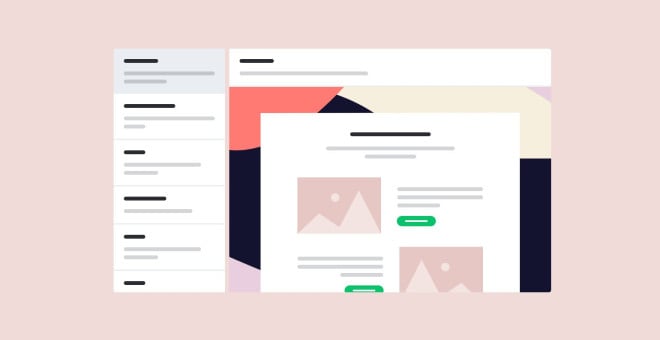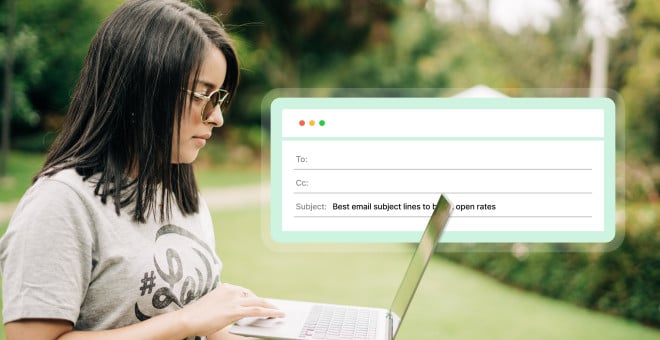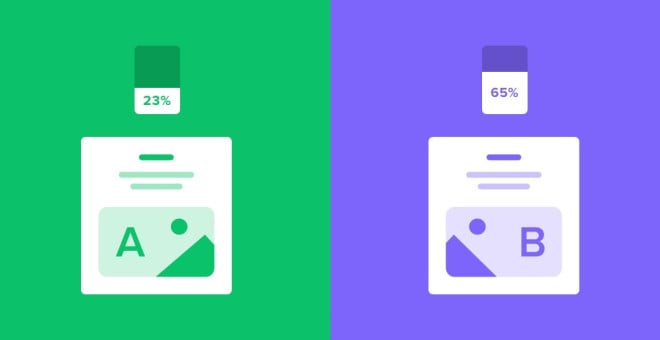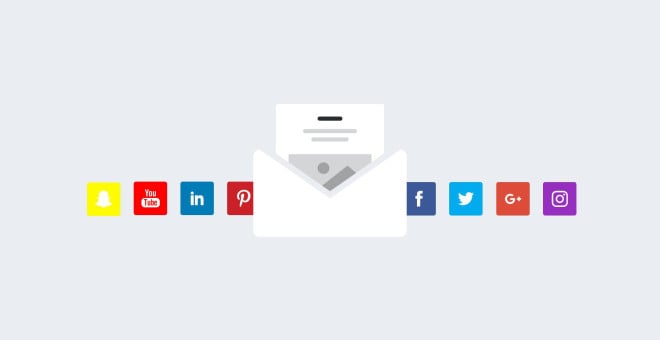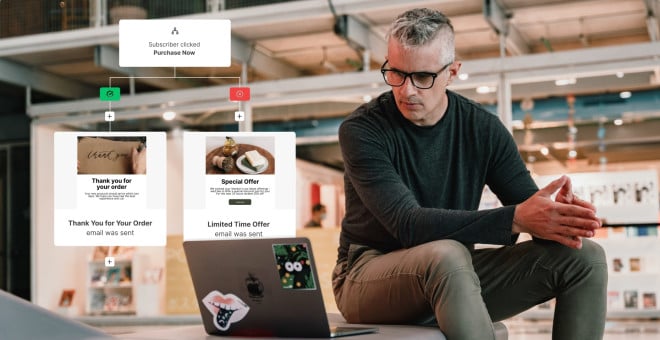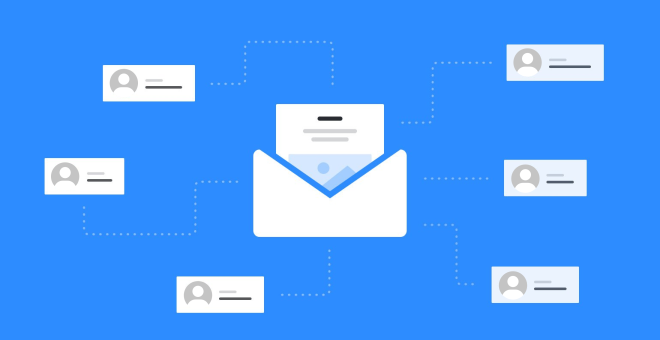How higher education & schools use email marketing to connect with students and staff
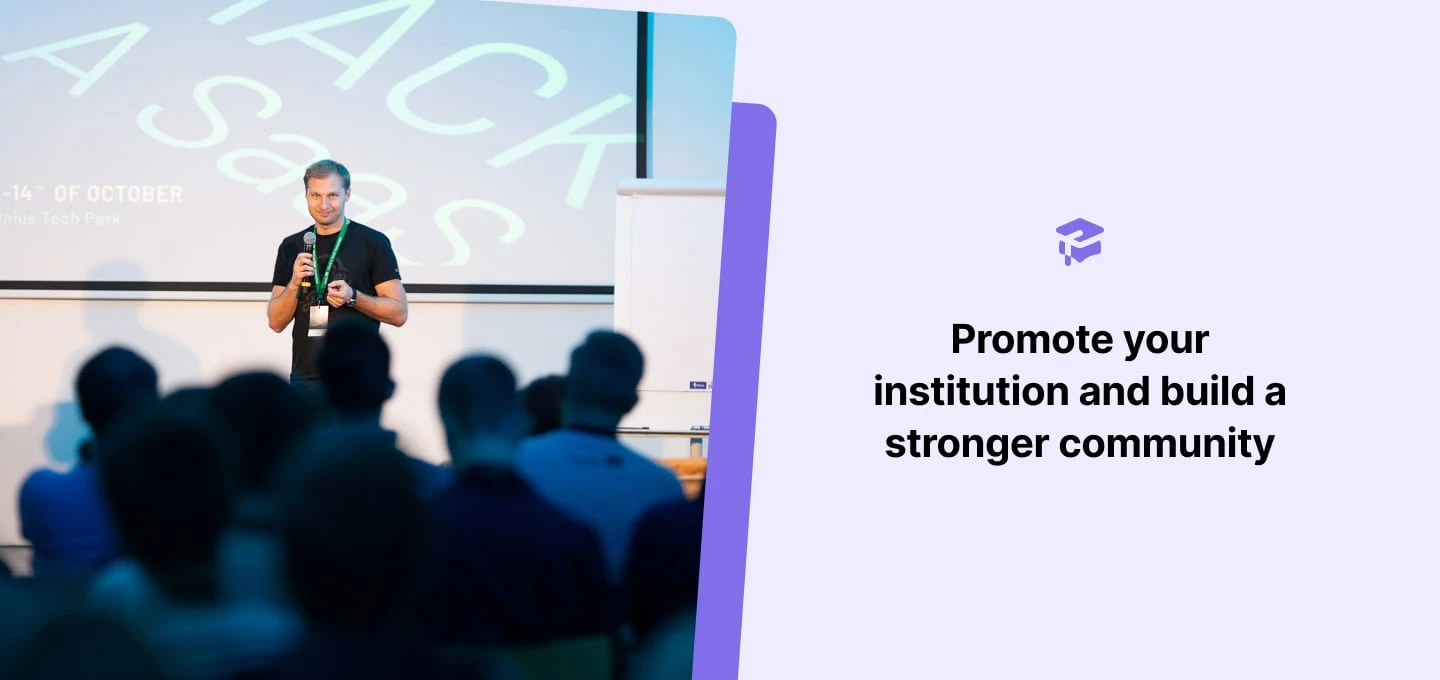
At university, you need to keep in touch with a lot of people simultaneously! Email marketing for higher education lets you manage different audiences and send tailored messages to each group.
When you aren’t nurturing relationships with current students, you’re keeping up with alumni and checking in with staff. Plus, you need to attract prospective students!
In higher education, email marketing helps you to:
Show prospective students why your institution is the best choice
Remind and inform students about university events
Build a stronger community
Stay connected with alumni
In this guide, you’ll learn how email marketing can streamline your student and staff communications. You’ll know exactly how to segment your subscribers, what types of email marketing campaigns to send to each target audience and how to create professional newsletters (no prior experience needed!).
Why is email marketing important for higher education institutions?
Unlike Millennials, it might seem like all Gen Z communication lives on social media like Instagram and TikTok. But you might be surprised to hear that email list signups are actually going up! Also, email is still prospective students’ favored communication channel with colleges and universities.
Today, email is still the best digital marketing channel to communicate with students.
So why use email software and not just send all educational messages via an email provider like Gmail or Yahoo? Here’s why:
1. Manage your audience
Having all your subscribers in one place gives you a good overview and makes it easy to keep your list updated. Subscribers can be segmented into groups, based on things like their program, role, interests or enrolled year. Learn more about email list segmentation.
2. Send targeted messages
Groups can be used to send personalized college emails to each one of your subscribers. Much of this personalization can be automated with smart email marketing tools, such as sending by timezone, applying custom fields (e.g. name or location), and using dynamic content to reach different groups through the same email.
3. Use consistent branding
With email, you can add instantly-recognizable colors, logos and fonts to stand out in the inbox, every time. Different departments can use pre-saved templates and easily add their own content using a drag & drop editor. This helps to keep a uniform look.
4. Make it a team effort
Most email tools allow several teams to work on email marketing campaigns simultaneously. User permissions define what each person is allowed to see or do, so for example, a student newsletter intern won’t be able to access any billing information.
5. Invest in a cost-effective solution
Most institutions don't have huge higher education marketing budgets. Email marketing is still one of the most cost-effective marketing tools available, with an ROI of $42 for every dollar that is spent!
6. Promote your institution
Newsletters give you a direct line of communication with your subscribers. You can set up a regular email cadence to send consistent messages about your institution, its values, and upcoming events to keep people engaged and interested.
7. Boost enrollment
With email, you can nurture new leads every step of the way. Set up email funnels to catch the attention of prospective students and guide them through the application process.
8. Enhance student experiences
Newsletters let you engage existing students and keep in touch with them through surveys, event RSVP buttons, quizzes, animated GIFs and more!
As you can see, using email marketing in higher education is a no-brainer. Now let's get into the practical details!
Best practices for your higher education email marketing strategy
OK, so you’re feeling hyped up about newsletters, but you’re wondering how to create a stand-out campaign? Here are 11 best practices so you can hit the ground running!
1. Design a sleek, professional newsletter
You want your newsletter to look visually attractive, but your organization probably doesn’t have teachers that are graphic designers by night. Luckily, you don’t need to!
With a drag & drop editor, you can simply select the elements you want, and drag them into the right position in your email! Check out this video tutorial below to learn how.
There are a couple of design hacks to keep in mind when prepping your campaigns.
When you use an email marketing tool, you can often choose from pre-built templates. These just need some minor tweaks, like adding your logo, matching the font and designing it with the respective institution colors. This way, students immediately see that the newsletter comes from their university.
You can then use the template as a base for each following newsletter. Email tools will make sure your newsletter is showcased correctly on mobile devices, by automatically resizing the template.
90% of the information transmitted to our brains is visual, so images in newsletters are a great way to catch your audience’s attention.
For example, you could showcase some photos of your campus to help prospective students to visualize themselves there. Or, you could create an infographic to show how your university is ranking this year.
You can also link to videos in your email to give campus tours, present interviews with current students, or share a lecture recording.
Just remember—don’t overdo it! Rather than overwhelming your audience, pick two or three stand-out, quality visuals that really get your message across.
Yes, your newsletter design should be aesthetically pleasing. But the story mustn’t stop there! Your email should always guide your readers towards your call to action (CTA) button.
Do you want them to apply for a course? Sign up for a lecture? Complete a survey? Focus your email design on leading them towards that action.
Check out this higher education email newsletter from Oxford University. It features embedded images and videos to capture attention, a clean, logical structure and some stand-out CTAs to get people applying!

To learn more about designing eye-catching emails, check out our ultimate guide below.
2. Keep the content clear and straightforward
Your students have their homework, and you have a pile of paperwork waiting to be reviewed. As effective as higher education newsletters are, no one has time to sit through another essay. Keep the content clear and don’t make your newsletter unnecessarily long. Think of one CTA for each educational newsletter and pick one (or a few) relevant topics that support this.
To learn more about crafting email content that people care about, take a look at this ultimate guide.
For further inspiration, this celebratory newsletter from Cardiff University on graduation day goes straight to the point. It guides the reader to a congratulatory message, and it also shares next steps and additional information for people to keep in mind after graduating.
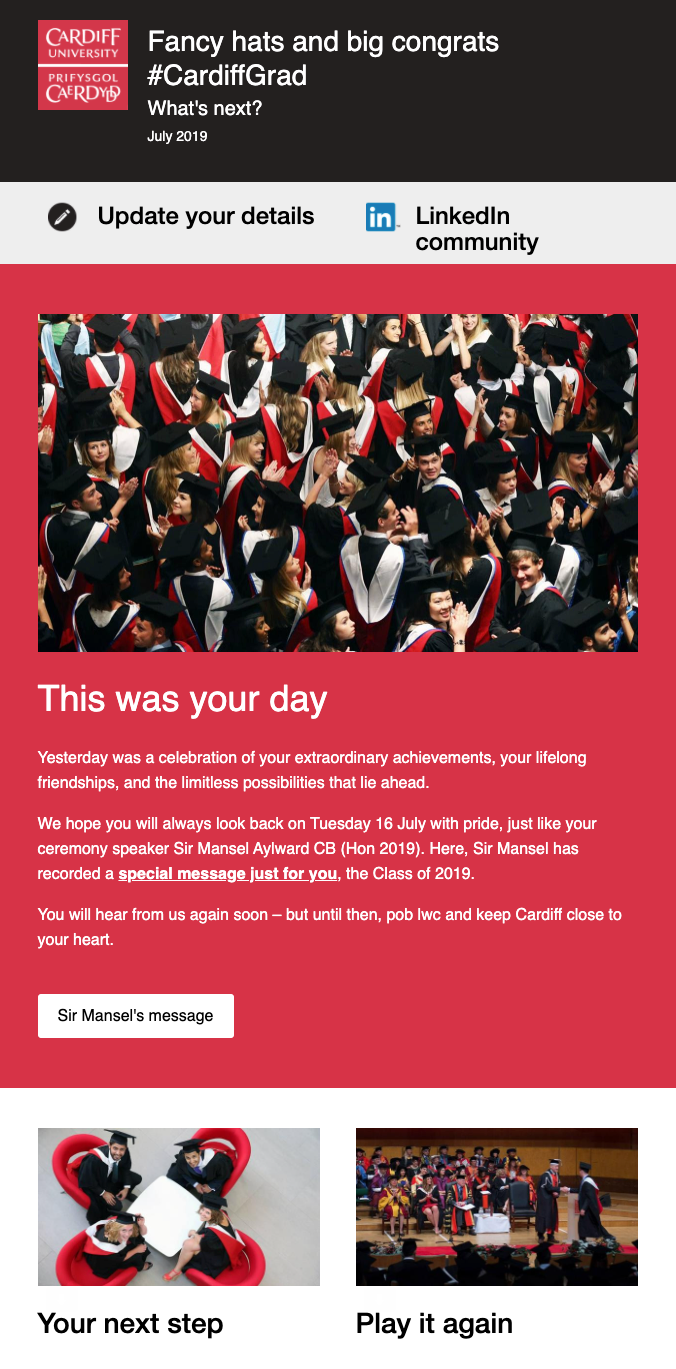
3. Stand out in the inbox with a catchy subject line
Students juggle classes, homework, smartphone use, social outings and hangovers. So you want to make sure your higher education email campaign grabs their attention. Be precise in your subject line and tell students what they can expect to read in the university newsletter.
Want to remind them of a deadline? Mention the exact date and express urgency in your email subject line. Want to catch their attention? Use the {$name} field to automatically address them by their name in the subject line.
From application reminders to graduations, here are some higher education subject line examples to get you inspired.
| Teesside University | {$name}, continue where you left off |
| Oxford University | Sorting your funding |
| Cardiff University | Fancy hats and big congrats #CardiffGrad |
| Texas Lutheran University | Passionate About Helping People? |
| Deakin University | Congratulations, you made it! |
To go deeper, check out this guide on how to write email subject lines.
4. A/B test your way to email success
Will our students prefer the subject line with, or without the emoji? Should we have an embedded video at the beginning of the email?
A/B testing takes the guesswork out of your emails. Simply test two versions of your email on a sample of your audience, then send the ‘winning’ version (with the most opens/ clicks) to the rest of your audience.
Remember, you can use A/B testing to find out which layout, design or subject line works best to engage with your higher education audience. We demystify A/B testing for you in the following guide, and you can also check out these 12 A/B testing examples for inspiration.
5. Target different audiences with segmentation
Would you DM your students, leads and alumni in the same group chat? Of course not! Your audience has very different needs. To send valuable messages to each subscriber, you need to segment them into groups.
These groups could be:
Prospective students
Students that recently applied
Everyone that’s currently enrolled
Students with the same field of study
Students enrolled in a certain year
Students that speak another language than English
Students with a specific age range (e.g. adult learners)
Students with similar campus life interests
Military enrollees
Alumni
👉 Tip: When you use segments in MailerLite, your subscribers will always be up-to-date. Segments are updated automatically as soon as a subscriber complies or no longer complies with the created rule. You create the rules, the email tool takes care of the rest.
Take a look at this guide to email segmentation for more tips!
6. Make it personal
If someone shouts your name, you’ll instantly respond, right? It’s instinctive! The same principle applies to email. When you think of your subscribers as individuals, rather than a whole email list, you can send more relevant content.
Here are some ideas for personalizing your higher education emails:
Name: Address your subscribers by their first name in the subject line
Situation: Add dynamic content blocks to your emails that are only visible to certain subscriber groups, such as your alumni or current students
Location: Send different emails to people in different locations, such as your local vs. international students
Behavior: Use MailerLite’s built-in Time inactive setting to segment subscribers who haven’t opened or clicked an email in a while, and send them a re-engagement campaign
Survey results: Send different follow-up emails depending on how students rated your university (e.g. invite the top rankers to become university ambassadors)
For example, this email from Charles Sturt University addresses the individual by their name, both in the newsletter and the subject line to catch their attention.
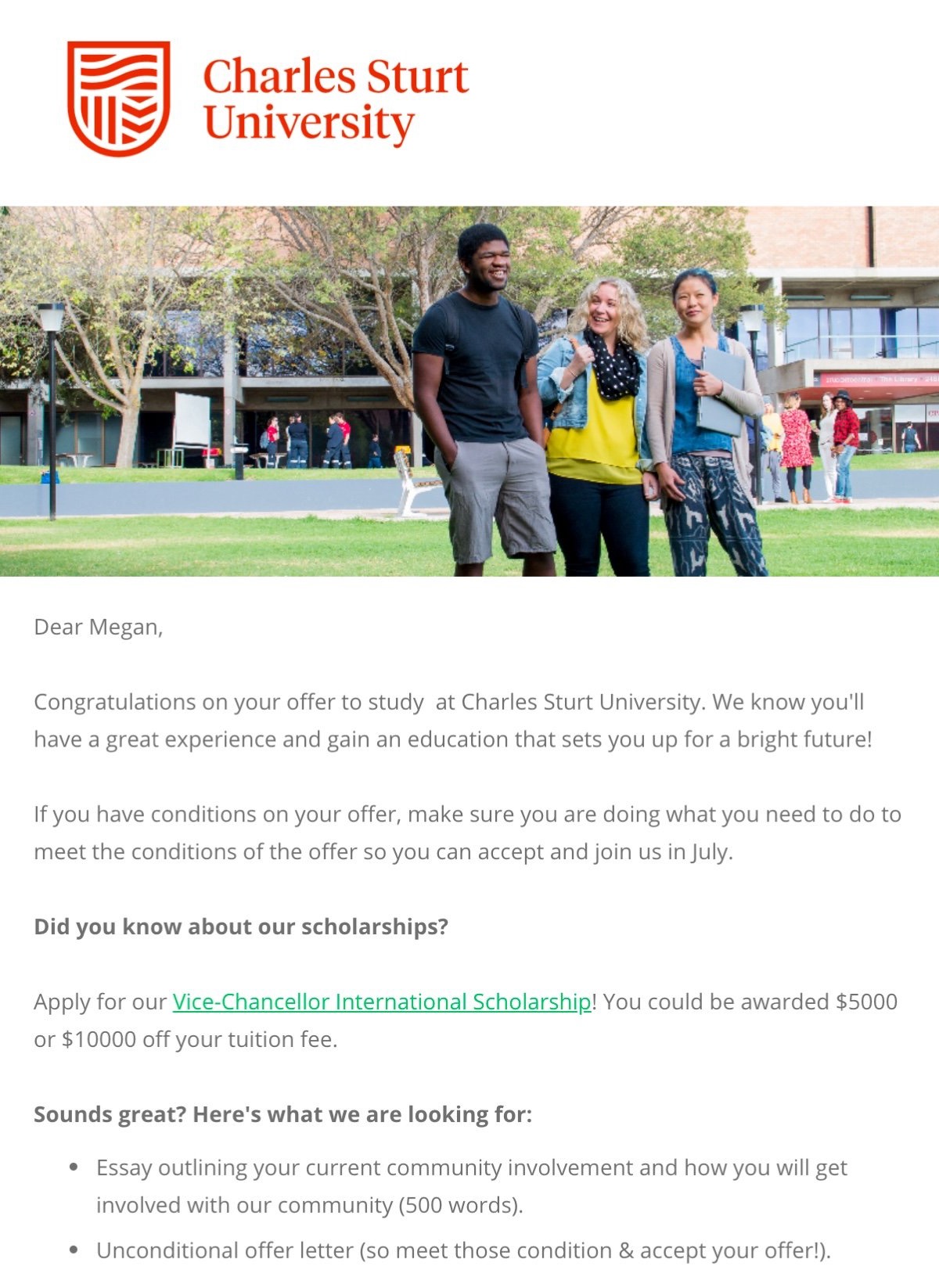
7. Use the ‘From’ field to your advantage
No-reply emails can be alienating! Instead of using an address like do-not-reply@youruniversity.com, use your sender information to build a connection with your audience.
For example, you could use an email address such as:
hello@youruniversity.com
[your first name]@youruniversity.com
info@youruniversity.com
applications@youruniversity.com
alumni@youruniversity.com
onboarding@youruniversity.com
If you don’t want people to contact you via this address, then leave a note with an alternative address for any questions. You could also link to your FAQs page.
👉 Bonus tip: Pictures or photo signatures make your emails feel more personal. If you’re using student photos, double-check that everyone involved is okay with their faces being shown.
8. Make your emails responsive on all devices
Nowadays, everyone checks a lot of their emails on mobile devices (and especially students). This means that your newsletters better look good on there!
With MailerLite, your emails are automatically responsive to different devices. In the editor, you can also preview how your email will look on mobile before you hit ‘send’, so you have extra peace of mind.
There are some additional things you can do to make sure your email shows up clearly.
Write in short paragraphs
Use a single-column email design
Have a clear CTA and buttons
Check how the font looks on mobile
See what the email content looks like in dark mode
Add ALT texts in case images aren’t displayed
Don’t go overboard with images, emojis and GIFs
This higher education email from the University of Saskatchewan features concise paragraphs, clear CTA buttons and a single-column structure to look good across all devices.
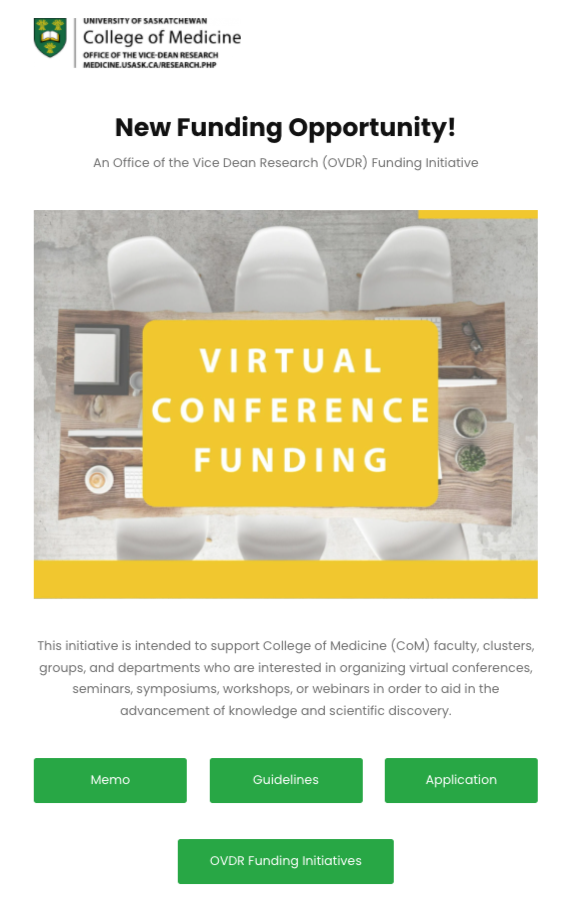
9. Integrate email and social media campaigns
You can turn your social media followers into active email subscribers, and vice versa! Having a strong presence on both platforms is key to attracting and then retaining your audience.
For example, you can use Facebook video ads to build your email list. You can then use social media blocks in your emails to link back to your pages. Or include social media icons at the bottom of each email, just like this one from Arizona State University.

To learn more about how email marketing and social media can work together for good, check out this ultimate guide.
10. Free up time with email automations
Higher education is a busy place to be! You want to automate as many tasks as possible so that you can focus on more important things, and that includes your emails. Instead of manually sending newsletters, you can set up automated email journeys for whenever your audience takes a certain action.
Let’s look at some quick marketing automations for universities.
1. Onboarding emails
Create a specific welcome series for new students joining in the first semester, where you describe the onboarding process and what to expect.
See a welcome email automation example
2. Courses and training
Is there some content that your students need to know before they join your lecture? Set up an automated course via email, which lets you deliver virtual classes on the go!
See an email course automation example
3. Graduation anniversaries
Send a reminder email to alumni each year, celebrating the years since they graduated with you, and reminding them to keep in touch. With MailerLite, you can use the ‘anniversary of date’ trigger for this.
See an automated email anniversary example
4. New blog posts
With RSS to email, you can automatically notify your email list as soon as you update your content. Keep students updated with the latest news, or notify them when new academic papers are published.
5. Auto resend
If you’ve sent out a survey or an assignment and you still haven’t heard back, you can automatically resend the campaign to those who didn’t open or click within the email the first time.
Learn more about email marketing automation for colleges in this ultimate guide.
11. Separate your marketing and transactional emails
Transactional emails are triggered by an action, such as a confirmation email when a student submits an application, or a receipt when they pay a fee.
Marketing emails share promotional content from the institution. You need to have permission from your subscribers to send marketing emails.
It’s better to separate them on different platforms which are optimized for their specific purposes.
For example, for marketing emails we recommend using an email software like MailerLite, while for transactional emails, we recommend MailerSend—an intuitive transactional email service with a powerful infrastructure to scale quickly.
Why choose MailerLite as your email marketing software?
MailerLite is an advanced email marketing platform that lets you create professional newsletters. Our 24/7 support and interactive features help you engage students and staff alike!
Here’s what you’ll love about it:
Easy collaboration: With different user permissions, you can collaborate with your team on different projects.
GDPR-friendly settings: Our GDPR tools help you fulfil any subscriber requests, such as their right to be forgotten, etc.
Responsive design: Your newsletters will look good on computers, smartphones and tablets alike!
Expert input: Access our database of experts for professional help with your campaigns.
Outstanding support: Our customer support specialists are available 24/7 to help you get up and running.
Curious to know more? Create a free account and see what you think!
Getting started with an email strategy
When you’re starting with email marketing efforts for your university, you’ll have a bit of homework to do.
Sign up for your preferred email software.
Create a signup form and implement this on the university website.
Build your college email list.
Keep your email list clean.
Segment subscribers into groups.
Send your first campaign.
We’ll leave step one up to you to decide… 😉
Building your university’s email list
When potential students and parents are browsing around for the most suitable university, it’s very unlikely they’ll make their decision on the spot. That’s why you want to collect emails to continue the student recruitment process after the initial contact.
Here are several quick ways to do that:
Display pop-up forms on your website: This will channel traffic towards your newsletter.
Embedded forms: Have a fixed area where people can sign up (e.g. in the footer of your website).
Lead magnets: Offer free brochures, ebooks or case studies that people can download when they sign up.
Offline apps: Collect emails offline with our iPad app.
When importing email addresses from current students and staff, make sure you have their consent to send newsletters.
👉 Tip: Though for signup forms we recommend asking for as little information as possible, in this situation you want to be specific. Let subscribers choose what studies they’re interested in so you can directly send them the correct information.
Want to learn more about growing a high-quality email list? We tell you all in this guide here.
Keeping your email list clean
If you want better open rates and click-through rates, then you need to keep your email list clean! Over time, you’ll inevitably accumulate subscribers who never engage with your emails. If you want to maintain good deliverability (meaning, your emails reach their intended destination without hitting spam filters), then you need to regularly remove these email addresses!
MailerCheck is a tool that lets you verify your email list and get rid of any addresses that are holding you back.
Segmenting subscribers into groups
Elsewhere, we've also written a guide on how to optimally use segments for your education subscriber list.
Done? Let’s continue with some ideas for your first targeted educational email campaign.
Stay top of mind with follow-up emails to remind them of the benefits of the study they’re interested in (use automations, if needed). Incorporate testimonials and case studies to paint a picture of college life.
Create segments for each field of study and send content about placement rates, after-class activities, internship opportunities, extracurriculars, travel possibilities and more. This will keep potential future students interested.
Make it easy for students to onboard by sending them a warm welcome email with a personal note from the head. You can also share move-in and sign-up dates, course material, contact information, a layout of the college building and other practical information.
Registration dates? Deadlines? Class trips? Parties? A newsletter can serve as a reminder to get your students to take action or mark things in their calendars. Highlight student initiatives and curricular activities, take interviews, show teacher fun facts, report sports results or announce mentor speed-dating and lunch roulette dates.
Implement surveys to gather data on what fields and jobs students venture into or invite them to a university reunion. While fundraising is a critical role of alumni, make sure you are not just sending emails that ask for money. Create longer-term strategies that build relationships with alumni to keep them connected to the traditions and maintain fond memories.
Using email tools for internal messages means that your subscriber list is always up-to-date and you can see who read your messages, especially important emails! In your list, you can change subscribers statuses from active to inactive. This makes it easy to filter out ex-staff members and update your list. You can also use segments to send emails to staff from a certain faculty.
Why wait? Start your college newsletter now!
With university email marketing, your college can efficiently manage its large and ever-changing subscriber list. It helps to streamline communication with (future) students and staff and deliver all audiences exactly the right message—resulting in many different relationships being nurtured at the same time.
You now have the power to create professional-looking newsletters. With a little help of prebuilt templates, your inner Basquiat will flourish by itself. This template can then be used to maintain consistent branding throughout all the future email campaigns send by diverse departments.
Does your university’s organization currently send newsletters? If not, we hope this guide motivates you to get started!
Create your first university newsletter in minutes!
Our free plan includes everything that you need to get started like drag & drop editors, email automation builders, signup forms, landing pages and much more.
